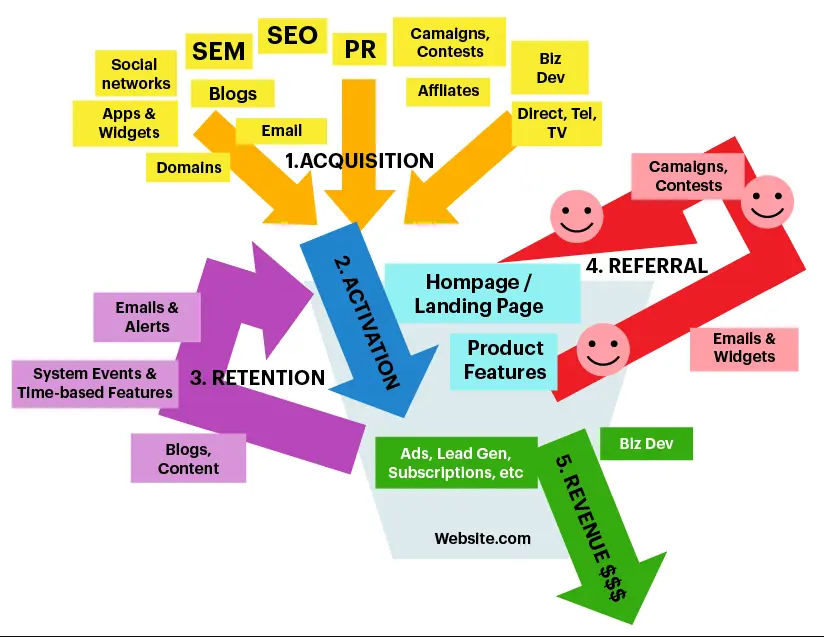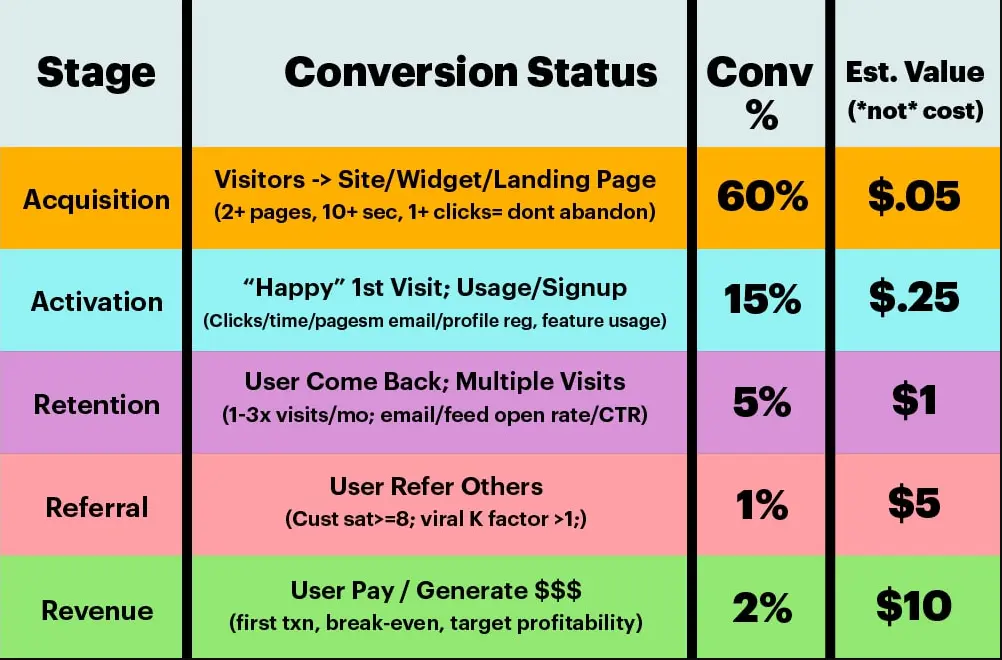We could find a bunch of AARRR frameworks definition across the internet (Thanks to Google). I don’t intend to create another one here.
Today I just want to share the simplest definition of this framework and how we have done here at Dwarves. It is a jumping-off point to brainstorming what AARRR does, and why it’s the important step that needs to be done.
What is AARRR framework by the way
AARRR is a revenue-driven funnel, what makes it different than other funnels? It’s revenue-driven. Yes, I said it twice because it is important. With AARRR as the backbone, we could make decisions that help drive the business into profits.
AARRR funnel contains 5 stages: Acquisition, Activation, Retention, Referral, and Revenue.
These 5 stages often change order, depends on what we want to attain. Sometimes you might want visitors first before turning them into your users and bring them your unique values. Sometimes you just want them to keep using your product as long as possible.

As we can see the above image which is the AARRR ecosystem. Based on our assumption about Problem - Solution, we (and input from the Business owner) will decide the order of 5 stages and what need to do at each stage to drive the User into the funnel. We could know which metrics of each stage and which ones need to be focused first in a matter of time.
Figure out which metrics are truly important, and focus on those. Keep in mind the current product stages and its goal then optimize those metrics: if we want to attract more users first focus on #New visitors, Bounce rates…etc, optimize the UX and Visual storytelling to increase those metrics.
When could we apply this
As soon as possible. Before any project, we spend 2-3 sessions with our clients to gather information and decide on a product strategy. Build based on data and evidence, if we want to build something that lasts for a long time. Our software development cycle starts with the Lean Business Model (aka Lean Canvas) and AARRR. While Business Model lets us know about the business goals and requirements (“What are the current problems? What are we gonna build? Who are the customers and how we could earn money?”), AARRR tells us what to do to get there and if we’re getting there (metrics).
“Do all the stages stay the same through all stages of a product?”
OBVIOUSLY NO. We keep talking about lean startup so we have to review this funnel frequently to make sure we’re going on the right track and maximize the profit/revenues at each product stage.
“If it changes, when do we consider changing it”
When we’re facing a decision-making moment.
For a specific case, we have been going with one client for a while, the product roadmap used to be pretty solid and well-defined at the beginning. We plan for a whole year, we aim for a new digital platform that could boost the business, and then the pandemic takes in place.
All the business suddenly go on halving.
We have a meeting with the client’s BOD to review the funnel, the business model and come to a decision that we have to acquire more new users and convert them into buyers for faster and stable revenue. We will keep using the old platform and enhance the Acquisitions/activations. All the stages of retention and referral had to be in waitlist until the key metrics about GOV, Buyers hit the target.
We can not make it if we haven’t defined those funnel before starting.
Keep in mind the current product stages and its goal then optimize the metrics.
This could save you a lot of money.

Conclusion
With AARRR Framework, we could build a product based on a concrete foundation and minimize the risks by defining what it takes to get the business goal and how to get there (metrics).
Along the way, we could define the metrics for each stage and which one deserves the utmost focus in a matter of time. It creates our ability to do things in the right way.

